MS Fatigue Toolkit: Why Cold Plunges Deserve a Spot in Your Daily Routine
💤 Introduction: The Challenge of MS Fatigue
MS fatigue isn’t like regular tiredness. It can strike suddenly, linger for days, and sap your ability to function—even after plenty of sleep. According to the National MS Society, over 80% of people with MS report fatigue as their most troubling symptom, more disabling than pain or even mobility issues.
Common fatigue management strategies include:
- Energy pacing
- Cooling devices
- Sleep hygiene
- Physical therapy
- Nutritional support
- Medication (e.g., amantadine, modafinil)
But recently, cold plunge therapy has entered the conversation. And for good reason: it’s drug-free, accessible, and can offer a fast, full-body reset—mentally and physically.
Want a cold plunge? Click here.
❄️ What Is Cold Plunge Therapy?
Cold plunge therapy involves immersing your body in cold water—typically between 10–15°C (50–59°F)—for a few minutes. Methods include:
- Cold showers
- Bathtubs with cold tap water and ice
- Outdoor dips in lakes or rivers
- Commercial cold plunge tubs or barrels
These short exposures to cold are a form of hormetic stress—a small challenge that can activate the body's recovery and resilience mechanisms.
🧠 Why MS Fatigue Is So Complex

To understand how cold plunges might help, let’s break down what causes MS fatigue:
✅ Neurological Fatigue
Demyelinated nerves require more energy to transmit signals, leading to mental and physical exhaustion.
✅ Immune Activation
Chronic inflammation increases cytokine load, which contributes to systemic fatigue.
✅ Sleep Disturbance
Insomnia, bladder dysfunction, and spasticity disrupt rest.
✅ Autonomic Dysfunction
Impaired regulation of blood pressure, temperature, and energy can trigger fatigue episodes.
✅ Mood and Cognition
Depression, anxiety, and cognitive overload often overlap with fatigue and worsen its effects.
MS fatigue is multi-layered, so relief needs to target the whole system—and that’s where cold plunges show promise.
💧 How Cold Plunges Help Fight MS Fatigue
Here’s why cold therapy may earn a place in your MS fatigue toolkit.
✅ 1. Cold Exposure Activates Your Energy System
Cold water stimulates norepinephrine release, which:
- Increases alertness and focus
- Boosts blood pressure and circulation
- Enhances energy without a “crash” like caffeine
This can break the cycle of morning inertia, giving you the mental and physical lift you need to start the day.
✅ 2. Cold Therapy Regulates the Nervous System
MS-related fatigue often involves autonomic nervous system dysfunction, causing your body to stay in a chronically “tired but wired” state.
Cold plunges activate the vagus nerve, helping you shift from sympathetic (stress mode) to parasympathetic (recovery mode).
This can lead to:
- Improved sleep quality
- Lower resting heart rate
- Better stress tolerance
- Reduced anxiety that worsens fatigue
✅ 3. Reduces Inflammation and Cytokine Activity
Research shows that regular cold exposure can reduce inflammatory cytokines like IL-6 and TNF-alpha—both of which are elevated in MS and linked to fatigue.
Lower inflammation = less immune-related fatigue.
✅ 4. Improves Blood Flow and Oxygen Delivery
After cold-induced vasoconstriction, your body rebounds with vasodilation—increased blood flow. This helps:
- Deliver oxygen to the brain and muscles
- Support recovery after activity
- Fight that sluggish, heavy-limb sensation
✅ 5. Builds Resilience Over Time
Cold plunging isn’t just about immediate energy. Over time, it:
- Increases mental toughness
- Improves sleep-wake cycles
- Helps regulate circadian rhythm
- Encourages better breath control and mindfulness
Think of it as “training” your nervous system to become more adaptive and less reactive.
🛠️ Building Your MS Fatigue Toolkit: Where Cold Plunges Fit In
Here’s how cold exposure complements other key tools for MS fatigue management:
| Tool | Function | How Cold Plunges Help |
|---|---|---|
| Pacing | Conserves energy | Cold plunges help recharge between tasks |
| Sleep hygiene | Restores body and mind | Improves nervous system regulation for better sleep |
| Cooling vests/fans | Reduce heat stress | Cold plunges lower core temperature more quickly |
| Exercise | Boosts strength & endurance | Use cold therapy post-exercise to recover faster |
| Nutrition | Fuels body & brain | Cold plunges may improve digestion via vagal tone |
| Mindfulness | Calms mental fatigue | Plunges increase present-moment awareness |
Cold therapy isn't a replacement—it’s a recovery amplifier.
🧊 How to Start Using Cold Plunges for MS Fatigue
✅ Step 1: Start Small
- Begin with cold showers—30 seconds at the end of your normal shower
- Build up to 1–3 minutes of cold only
- Breathe slowly through the discomfort: inhale 4 sec, exhale 6–8 sec
✅ Step 2: Create a Cold Plunge Setup
- Use a bathtub, barrel, or stock tank
- Fill with cold tap water + ice trays
- Use a thermometer (target 10–15°C / 50–59°F)
- Immerse up to shoulders or chest for 1–3 minutes
Always have warm clothes ready for afterward.
🗓️ Sample Cold Plunge Routine for Fatigue Support

| Day | Cold Exposure | Purpose |
|---|---|---|
| Mon | Cold shower (morning) | Wake up and break fatigue inertia |
| Tue | Cold plunge (2 mins post-activity) | Recovery and energy |
| Wed | Cold face splash or neck pack | Midday refresh |
| Thu | Cold plunge + breathwork | Reset stress and lift brain fog |
| Fri | Optional rest or contrast shower | Integration day |
| Sat | Outdoor cold exposure (if safe) | Mood + energy boost |
| Sun | Shower burst (30–60 sec) | End-of-week reset |
⚠️ Safety Tips for Cold Therapy in MS
Cold therapy is generally safe, but MS adds some complexity. Keep these precautions in mind:
🚫 Avoid cold plunges if you have:
- Cardiac issues or arrhythmias
- Raynaud’s disease or cold-triggered spasticity
- Advanced autonomic dysfunction
- Severe fatigue post-relapse
✅ Tips to stay safe:
- Never plunge alone—especially if you have balance or sensory issues
- Use a timer to track exposure
- Always warm up afterward: cozy clothes, warm drink, light movement
- Track your body’s reactions in a journal
Listen to your body. If cold increases fatigue or discomfort, scale back or pause.
💬 Real MS Voices: What People Say About Cold and Fatigue
“I used to drink coffee all day just to function. Now I plunge for 2 minutes in the morning—and I feel human again.”
— Jordan, 32, diagnosed 3 years ago
“It’s not a miracle, but when I do cold dips consistently, I don’t crash as hard in the afternoon.”
— Elaine, 45, SPMS
“My body feels like it’s dragging through sludge. A cold shower is my reset button—it cuts through the fog.”
— Nick, 39, RRMS
🧘 Combine with Breathwork for Maximum Effect
To optimize the fatigue-fighting benefits of cold, pair with breathwork.
- Try this pattern during your plunge:
- Inhale slowly through the nose (4 sec)
- Pause briefly (2 sec)
- Exhale fully through the mouth (6–8 sec)
- Repeat until calm
This increases vagal tone, helps reduce fear or stress reactions, and enhances the energizing and relaxing effects post-plunge.
Want to try Breathwork? Click here.
🧩 Personalization: Cold May Work Better at Certain Times
Some people find cold plunges most effective when used:
- First thing in the morning to combat inertia
- Midday to reset after cognitive load
- Post-exercise to reduce inflammation
- Before tasks that demand focus (meetings, social events)
Keep a fatigue tracker and log:
- Time of plunge
- Duration
- Symptom changes (energy, clarity, mood)
This helps tailor your routine to your unique rhythm.
📚 The Science Behind It
Cold exposure affects systems directly tied to MS fatigue:
| System | MS Impact | Cold Plunge Effect |
|---|---|---|
| Immune | Inflammation, cytokine elevation | May reduce IL-6, TNF-alpha |
| Nervous | Autonomic dysfunction | Vagal nerve stimulation |
| Hormonal | Low norepinephrine/dopamine | Sharp increase in both |
| Sleep | Poor sleep quality | Nervous system regulation improves sleep |
| Cognitive | Brain fog, sluggishness | Boosts alertness and blood flow |
🎯 Final Thoughts: A Simple Tool with Powerful Potential
MS fatigue is real, relentless, and often resistant to traditional treatments. Cold plunges won’t solve everything—but they can offer:
- A reset when you feel stuck
- A calm burst of energy without stimulants
- A way to reclaim control over your daily rhythm
What makes cold plunges so empowering is their simplicity. No prescriptions, no complex equipment—just you, water, breath, and a willingness to embrace short-term discomfort for long-term resilience.
You don’t need to be a “biohacker” or athlete to benefit. You just need a curious mindset, a thermometer, and a towel.
In your MS fatigue toolkit, cold plunges may be the refresh button you didn’t know you needed—but won’t want to go without.
Want a cold plunge? Click here.
📚 References
Flachenecker, P., et al. (2002). Fatigue in multiple sclerosis. Journal of Neurology, 249(9), 1127–1133.
Kox, M., et al. (2014). Voluntary activation of the sympathetic nervous system and attenuation of the innate immune response in humans. PNAS, 111(20), 7379–7384.
Davis, S. L., et al. (2010). Thermoregulation in multiple sclerosis. Journal of Applied Physiology, 109(5), 1531–1537.
Huttunen, P., et al. (2004). Health effects of cold exposure. International Journal of Circumpolar Health, 63(2), 243–245.
van der Meijden, W. P., et al. (2022). Cold exposure, vagus nerve stimulation, and neuroimmune health. Frontiers in Neuroscience, 16, 889330.
Related Posts
-

Learning to Feel Safe in Your Body Again
If your body no longer feels like a safe place—due to trauma, chronic illness, or anxiety—you’re not alone. This guide offers gentle, body-based strategies to help you reconnect with yourself, regulate your nervous system, and rebuild trust in your physical experience.
-

When You Feel Emotionally Unlovable: Challenging the Lie
Feeling unlovable because of your emotions, illness, or sensitivity? You’re not broken—you’re healing. Learn how to challenge the lie of emotional unworthiness and rebuild self-trust, one compassionate step at a time.
-
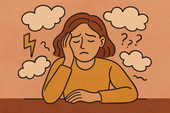
Brain Fog and Fatigue: How to Stop Blaming Yourself
Struggling with brain fog or chronic fatigue? You’re not lazy or failing. Learn how to stop blaming yourself for symptoms caused by MS or chronic illness, and start embracing a more compassionate path to healing and self-understanding.
-

Creating an Emotional Support Team You Actually Trust
Tired of feeling unsupported or misunderstood? Learn how to build an emotional support team you actually trust—with people who see you, hold space for you, and respect your boundaries, especially when living with MS or chronic illness.
-

MS, Vulnerability, and the Fear of Being Seen
Living with MS can make vulnerability feel unsafe. Learn why so many people with MS hide their struggles—and how to gently move toward authenticity, self-acceptance, and deeper connection without shame.
-
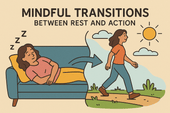
Mindful Transitions Between Rest and Action
Struggling to shift between rest and activity without guilt or overwhelm? This guide offers gentle, mindful strategies to make transitions feel more natural, intentional, and supportive of your nervous system.
-

The Pain of Being Misunderstood—And How to Cope
Feeling the sting of being misunderstood? Learn why it hurts so deeply and discover practical, healing strategies to protect your truth, communicate clearly, and rebuild emotional safety when others just don’t get it.
-

Letting Go of Productivity Guilt When You Need to Rest
Struggling with guilt every time you try to rest? Learn how to release productivity shame, understand why rest matters, and embrace a more compassionate rhythm for healing and recovery—without feeling lazy.
-

Rebuilding Energy Reserves Without Shame
-

What to Do If You Feel Emotionally Invalidated by Doctors
Feeling emotionally invalidated by your doctor can be deeply distressing. Learn how to recognize medical gaslighting, validate your own experience, and advocate for better care when you’re not being heard.
-

How to Rest Without Feeling Lazy
Rest isn’t laziness—it’s a necessary act of self-respect. Learn how to shift your mindset, let go of guilt, and embrace rest as a vital part of mental and physical well-being.
-

Redefining Energy Management as Emotional Self-Care
Energy isn’t just physical—it’s emotional. Learn how redefining energy management as emotional self-care can help you protect your peace, support your nervous system, and live more in tune with your true needs.
-

Sleep Deprivation and Emotional Dysregulation in MS
-

How to Cope When Friends Disappear After Diagnosis
Losing friends after a diagnosis can feel like another kind of grief. Discover why some friends disappear—and how to cope with the emotional fallout while building more supportive relationships.
-

How to Talk to Your Kids About MS Without Overwhelming Them
Struggling with how to explain MS to your kids? Learn how to talk to children of all ages about multiple sclerosis with honesty, clarity, and emotional safety—without overwhelming them.
-

MS and the Fear of Emotional Abandonment
The fear of emotional abandonment is common for people with MS. This article explores why it happens, how it impacts your relationships, and how to create emotional safety and healing.
-

Forgiveness, Closure, and Letting Go of the Past with MS
Living with MS often brings emotional wounds from the past. Learn how forgiveness, closure, and letting go can help you heal emotionally—and reclaim peace in the present.
-
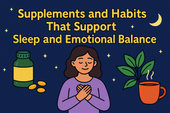
Supplements and Habits That Support Sleep and Emotional Balance
Struggling with poor sleep and emotional ups and downs? Discover calming supplements and daily habits that support deep rest and mental well-being—backed by science and easy to implement.
-

When Insomnia Feels Like Your MS Brain Won’t Turn Off
Struggling to sleep with MS? When your brain won’t shut off at night, insomnia feels relentless. Learn what causes it—and discover science-backed strategies to calm your mind and finally rest.
-

The Emotional Toll of Waking Up Tired Every Day: Why It Hurts More Than You Think
Waking up tired every day takes a deep emotional toll—from mood swings to lost motivation and self-doubt. Learn why chronic fatigue hurts more than you think and how to gently reclaim your mornings.
-
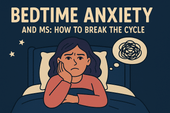
Bedtime Anxiety and MS: How to Break the Cycle
Bedtime anxiety is a common struggle for people with MS—and it’s more than just racing thoughts. Learn how MS-related stress, nervous system dysregulation, and fear of symptoms can create a cycle of sleeplessness, and discover practical, calming strategies to finally reclaim restful nights.
-

How Mental Health Affects Sleep Quality in MS: Breaking the Cycle of Fatigue and Emotional Distress
Struggling to sleep when you have MS? Discover how anxiety, depression, and neurological changes impact your rest—and what you can do to reclaim it. From CBT-I and calming supplements to lifestyle tips that support both mental health and sleep, this guide offers practical strategies for better nights.
-

Learning to Love Your Life (Even When It’s Not What You Expected)
Your life may not look how you imagined—but it’s still worth loving. Learn how to find peace, purpose, and joy in the unexpected.
-

Tips for Managing Depressive Thoughts Without Judgment
Learn how to meet depressive thoughts with compassion, not shame. These gentle, research-backed tools help you manage low moods without self-judgment.
-

Rewiring Hope: How to Slowly Come Back to Life
Feeling emotionally numb or disconnected? Learn how to gently rebuild hope, one small sensory step and spark of life at a time.
-

Depression and Suicidality in MS: A Conversation That Needs to Happen
Depression and suicidality in MS are real—and urgent. Learn why we must talk about it, how to spot warning signs, and where to find help and hope.
-

Finding Meaning When Life Feels Empty
Feeling disconnected or numb? Discover gentle ways to find meaning again—even in emptiness—through daily rituals, reflection, and purpose.
-

The Power of Daily Structure in Preventing Mental Health Spirals
Daily structure can prevent mental health spirals by creating safety, routine, and self-trust—especially for those with MS, depression, or anxiety.
-

Healing from Emotional Flatness with Sensory Rituals
Feeling emotionally numb or disconnected? Discover how sensory rituals can gently restore pleasure, presence, and emotional resilience.
-

The Role of Light Therapy for Seasonal Depression and MS
Can light therapy ease seasonal depression in people with MS? Discover the science, benefits, and how to use it safely for better mood and energy.
-

Medication vs Therapy: Treating MS-Related Depression Effectively
Explore whether therapy, medication, or both are best for treating MS-related depression. Understand what works, when—and why combination care is often ideal.
-

How to Support a Partner with MS and Depression
Learn how to support a partner living with MS and depression—practical tips, emotional tools, and ways to protect your own mental health too.
-

The Emotional Cost of Losing Your Old Life
Losing your old life to MS isn’t just about physical symptoms—it’s about grieving the identity, dreams, and freedom you once had. This article explores the emotional toll of invisible grief and how to begin healing without denying the pain.
-

MS, Depression, and Hormones: What You Should Know
MS-related depression isn’t always just emotional—it can be hormonal. Discover how thyroid, sex, and stress hormones influence mood in MS, why women may feel worse during PMS or menopause, and what signs to look for when hormones may be driving emotional instability.
-

MS and Anhedonia: Reclaiming Pleasure One Step at a Time
Anhedonia—feeling emotionally flat or disconnected—is a common but misunderstood symptom of MS depression. This article explores how neuroinflammation, dopamine disruption, and fatigue can dull your sense of joy—and how small, gentle steps can help you begin to feel again.
-
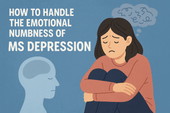
How to Handle the Emotional Numbness of MS Depression
Emotional numbness in MS depression doesn’t always look like sadness—it can feel like nothing at all. Learn why this disconnection happens, how it's tied to neuroinflammation and nervous system overload, and discover science-backed strategies to gently reconnect with your emotions.
-
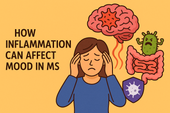
How Inflammation Can Affect Mood in MS
Mood swings and emotional numbness in MS aren’t just psychological—they can be driven by immune system inflammation. This article explores how inflammatory cytokines affect the brain, why mood changes are often biological, and what you can do to calm your nervous system from the inside out.
-
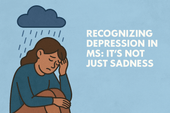
Recognizing Depression in MS: It's Not Just Sadness
Depression in multiple sclerosis (MS) is more than just sadness—it can be a neurological symptom, a side effect of inflammation, or a silent weight that masks itself as fatigue or emotional numbness. This article helps you recognize the hidden signs of MS-related depression, understand the science behind it, and explore real treatment options that support both mental and physical health.
-

Is Cryotherapy Safe for MS? Pros, Cons, and How It Compares to Cold Plunges
Cryotherapy promises quick recovery, inflammation reduction, and mood support—but is it safe for people with MS? This article breaks down the science, risks, and real-life benefits of cryotherapy for multiple sclerosis. You’ll also learn how it compares to cold plunges and which option may be better for calming flares and regulating your nervous system.
-

Can Cold Plunges Help Reduce Inflammatory Flares in MS?
Flares in multiple sclerosis (MS) are often driven by inflammation—but what if cold water could help turn down the heat? This in-depth article explores how cold plunges may help reduce flare frequency and intensity in MS by calming the immune system, lowering pro-inflammatory cytokines, and regulating the nervous system. Learn how to safely use cold exposure as part of your MS recovery routine.
-
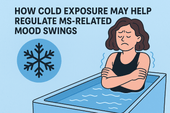
How Cold Exposure May Help Regulate MS-Related Mood Swings
Mood swings are a common but overlooked challenge in multiple sclerosis (MS). This article explores how cold exposure—like cold plunges and showers—may help regulate emotional ups and downs by calming the nervous system, reducing inflammation, and boosting mood-enhancing chemicals. Learn how to use this natural tool safely to support your mental and emotional resilience with MS.
-
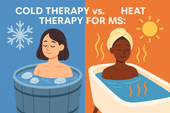
Cold Therapy vs. Heat Therapy for MS: Which One Helps More?
Managing multiple sclerosis (MS) often means navigating symptoms like fatigue, spasticity, pain, and nerve dysfunction. But when it comes to using temperature-based therapies, there’s a question many patients face: Should I be using cold or heat? In this in-depth guide, we explore the benefits, risks, and best use cases of cold therapy vs. heat therapy for MS.
-
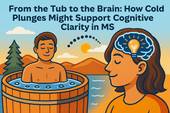
From the Tub to the Brain: How Cold Plunges Might Support Cognitive Clarity in MS
Cognitive fog is one of the most frustrating symptoms of multiple sclerosis (MS). But could cold plunges—those bracing dips into icy water—offer a surprising path to mental clarity? This article explores the emerging science behind cold exposure, brain function, and how a cold tub might help people with MS sharpen focus, lift brain fog, and reset their nervous system.
-
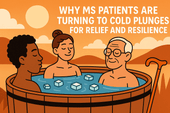
Why MS Patients Are Turning to Cold Plunges for Relief and Resilience
Cold plunges are no longer just for elite athletes and wellness influencers. A growing number of people with multiple sclerosis (MS) are turning to cold water immersion to ease symptoms, build nervous system resilience, and find calm in the chaos of chronic illness. This article explores why—and how—you might want to give it a try.
-
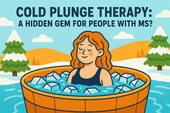
Cold Plunge Therapy: A Hidden Gem for People with MS?
Cold plunge therapy—once the domain of elite athletes and biohackers—is gaining attention among people with multiple sclerosis (MS). Could it help reduce inflammation, calm the nervous system, and ease MS symptoms like fatigue and spasticity? In this article, we dive deep into the science, benefits, safety, and practical application of cold plunges for MS recovery and symptom relief.
-
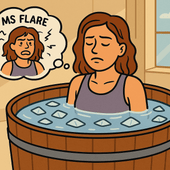
Finding Relief in the Midst of a Flare
MS flares can leave you feeling overwhelmed, exhausted, and mentally foggy. Cold water therapy is emerging as a promising tool to help reset the body and mind after a flare. This article explores how cold exposure supports recovery, calms the nervous system, and can be safely added to your daily routine.
-
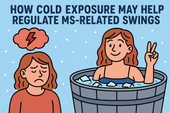
How Cold Exposure May Help Regulate MS-Related Mood Swings
Mood swings in multiple sclerosis (MS) can feel like emotional whiplash—one moment calm, the next overwhelmed, angry, or hopeless. While medications and therapy help, many people with MS are exploring natural strategies to support emotional balance. One surprising tool gaining attention? Cold exposure. In this article, we explore how cold plunges and other forms of cold therapy may regulate the nervous system, stabilize mood, and offer emotional relief for people with MS.
-
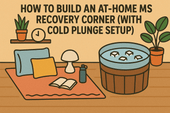
How to Build an At-Home MS Recovery Corner (with Cold Plunge Setup)
Create your personal MS recovery oasis at home—complete with a cold plunge setup. Learn how to design a space that supports healing, reduces inflammation, and helps you manage symptoms naturally.
-
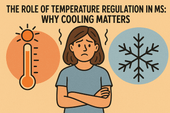
The Role of Temperature Regulation in MS: Why Cooling Matters

















































